 How Is A Drain Pipe Corrosion Survey Conducted
How Is A Drain Pipe Corrosion Survey Conducted
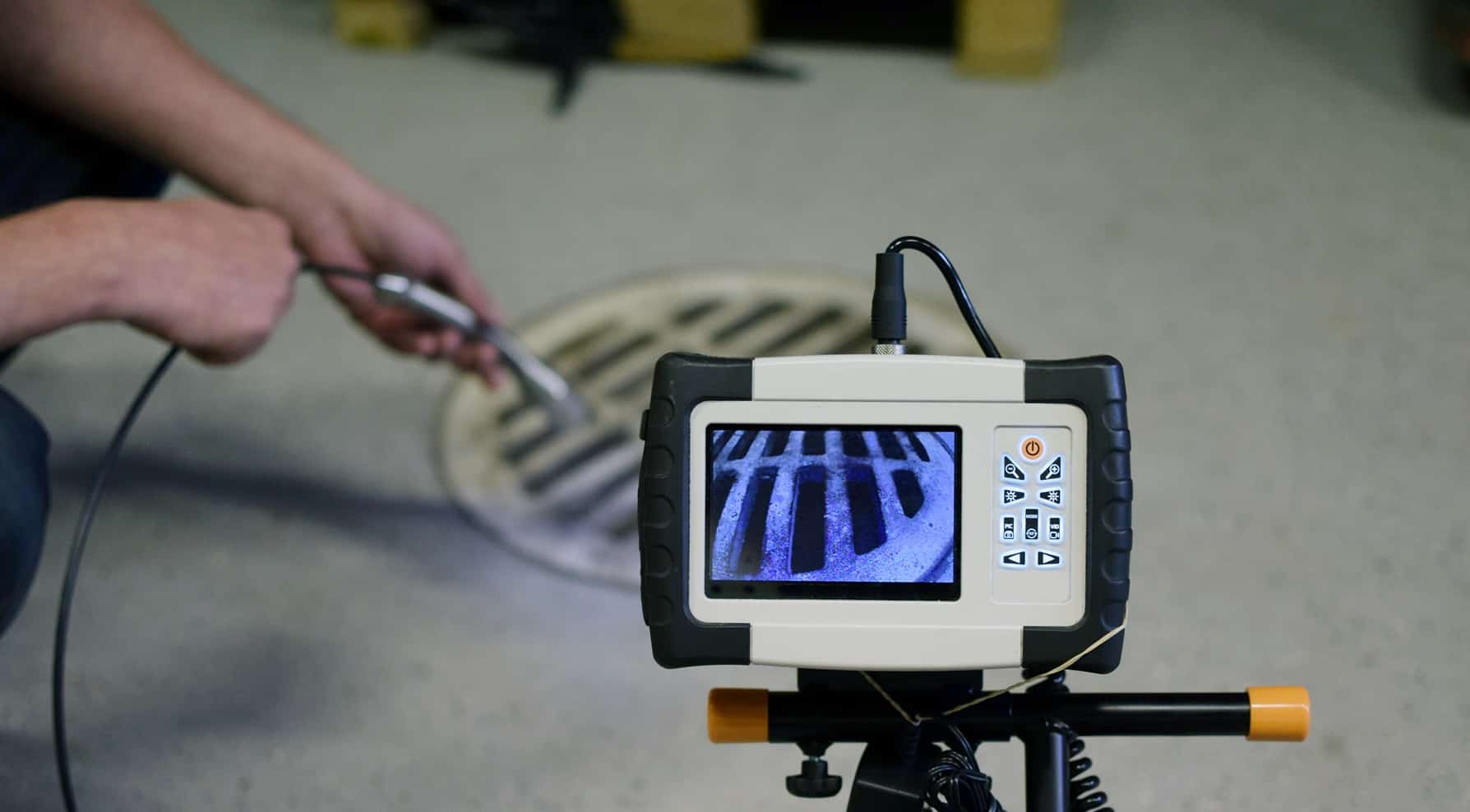
What Is a Drain Pipe Corrosion Survey?
A drain pipe corrosion survey is a systematic examination of drainage systems to identify and assess the extent of corrosion. These surveys are essential for diagnosing the condition of pipes, which can deteriorate over time due to various factors, including chemical reactions, physical stress, and environmental conditions.
The Necessity of Corrosion Surveys
Corrosion surveys are critical for ensuring the longevity of drainage systems. By detecting issues early, property owners can prevent the costly consequences of pipe failures, such as leaks, blockages, and environmental contamination. Regular surveys can also inform maintenance schedules, helping to extend the life of the infrastructure.
When to Conduct a Corrosion Survey
Property owners should consider a corrosion survey when they notice signs of drainage system degradation, such as unexplained odours, slow drainage, or visible damage. Additionally, surveys should be part of routine maintenance, especially for older systems or those in corrosive environments.
Qualified Professionals for Corrosion Surveys
Professionals qualified to perform corrosion surveys typically have specialised training in plumbing systems and may hold certifications in inspection technologies. They utilise advanced equipment, such as CCTV cameras and sonar units, to conduct thorough inspections and provide accurate assessments of pipe conditions.
The Importance of Regular Corrosion Surveys
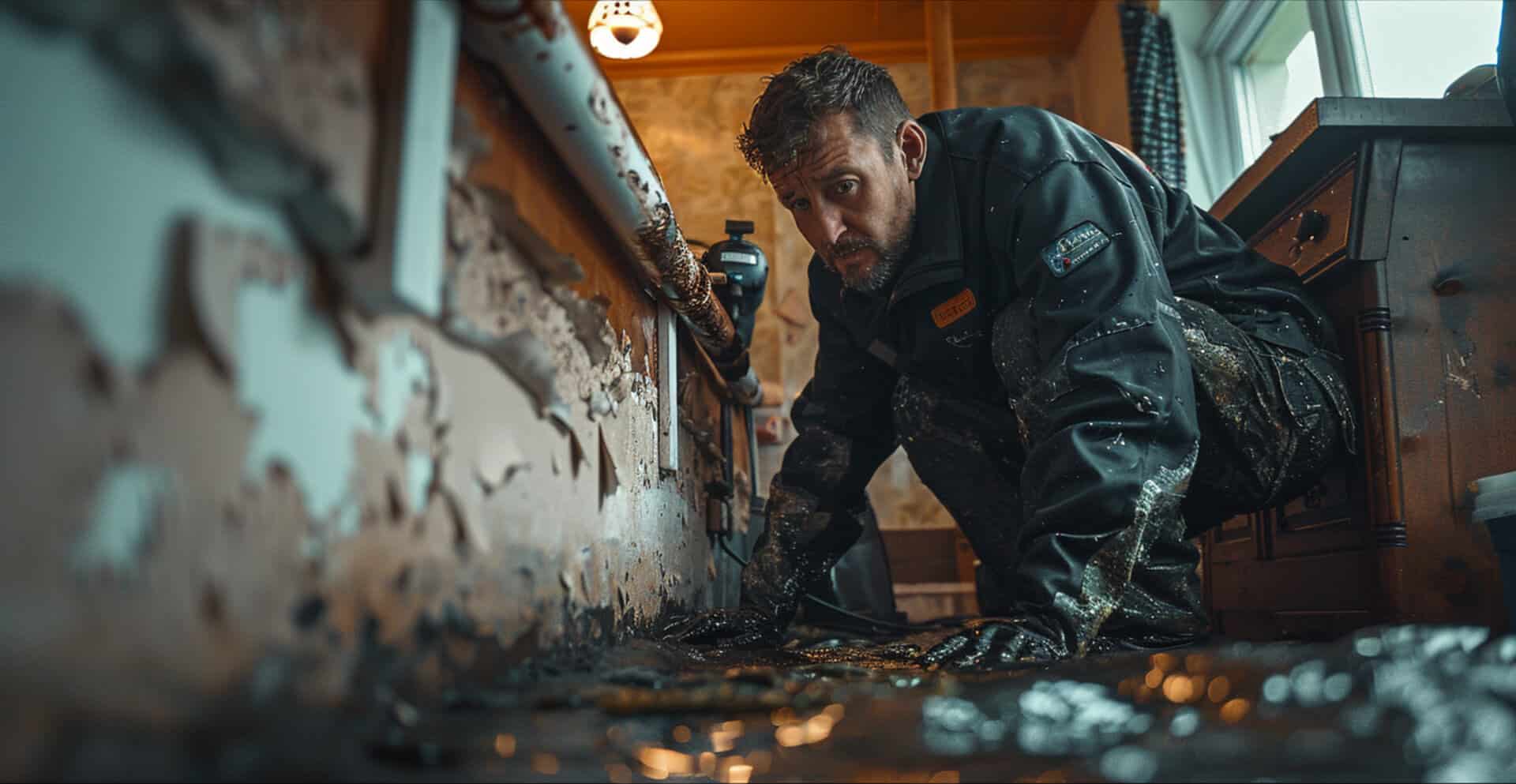
Regular corrosion surveys are a critical component of maintaining the health of drainage systems. By conducting these surveys, property owners can detect potential issues early, which can lead to significant cost savings by avoiding extensive repairs or replacements in the future.
Preventive Surveys as Cost-Saving Measures
Preventive surveys serve as an early warning system, identifying minor issues before they escalate into major problems. By addressing these issues promptly, you can avoid the higher costs associated with emergency repairs, which often include additional expenses due to water damage, business interruptions, or increased labour charges for urgent service.
Consequences of Neglecting Corrosion Surveys
Neglecting regular corrosion surveys can lead to a range of problems, from the inconvenience of blockages and slow drainage to more severe issues like structural damage or environmental contamination. The latter can result in hefty fines and remediation costs, not to mention the potential harm to public health and local ecosystems.
Informing System Design and Construction
Corrosion surveys provide valuable data that can inform the design and construction of efficient drainage systems. By understanding the specific conditions that contribute to corrosion, engineers can select appropriate materials and design systems that are more resistant to degradation, ensuring a longer lifespan and better performance.
Specialised Equipment in Corrosion Surveys
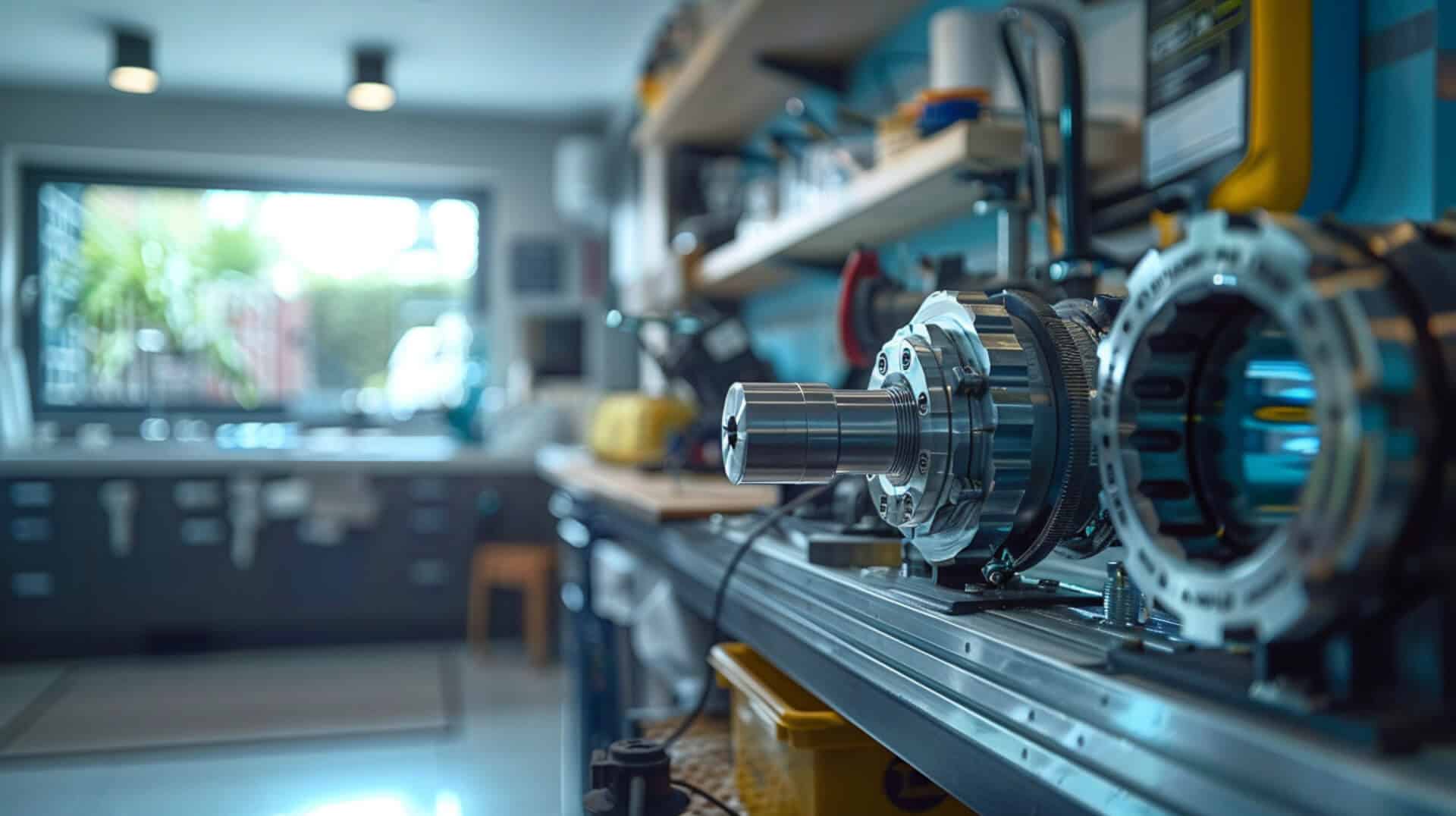
Corrosion surveys of drainage systems rely on a variety of specialised equipment to accurately assess the condition of pipes and identify any signs of deterioration.
Advanced Inspection Tools
CCTV cameras, drain cameras, and crawler units are commonly employed in these surveys. These devices provide real-time visuals of the interior conditions of pipes, allowing for a detailed inspection without the need for excavation. High-definition cameras offer clear images of the pipe walls, which is essential for identifying fine cracks or the early stages of corrosion.
Sonar Units and Their Role
Sonar units play a pivotal role in detecting blockages and assessing the extent of corrosion, especially in areas that are not easily accessible or where visibility is poor. By emitting sound waves and analysing their return, sonar technology can map the interior of pipes and reveal anomalies in the pipe’s structure.
Technological Advancements
The accuracy of corrosion surveys has significantly improved with advancements in technology. Modern inspection tools can provide 360-degree visuals, allowing for a comprehensive view of the pipe’s condition. Additionally, techniques such as Alternating Current Voltage Gradient (ACVG) are utilised to detect coating defects that could lead to corrosion, ensuring that even the most subtle signs are not overlooked.
Identifying Common Issues Through Corrosion Surveys
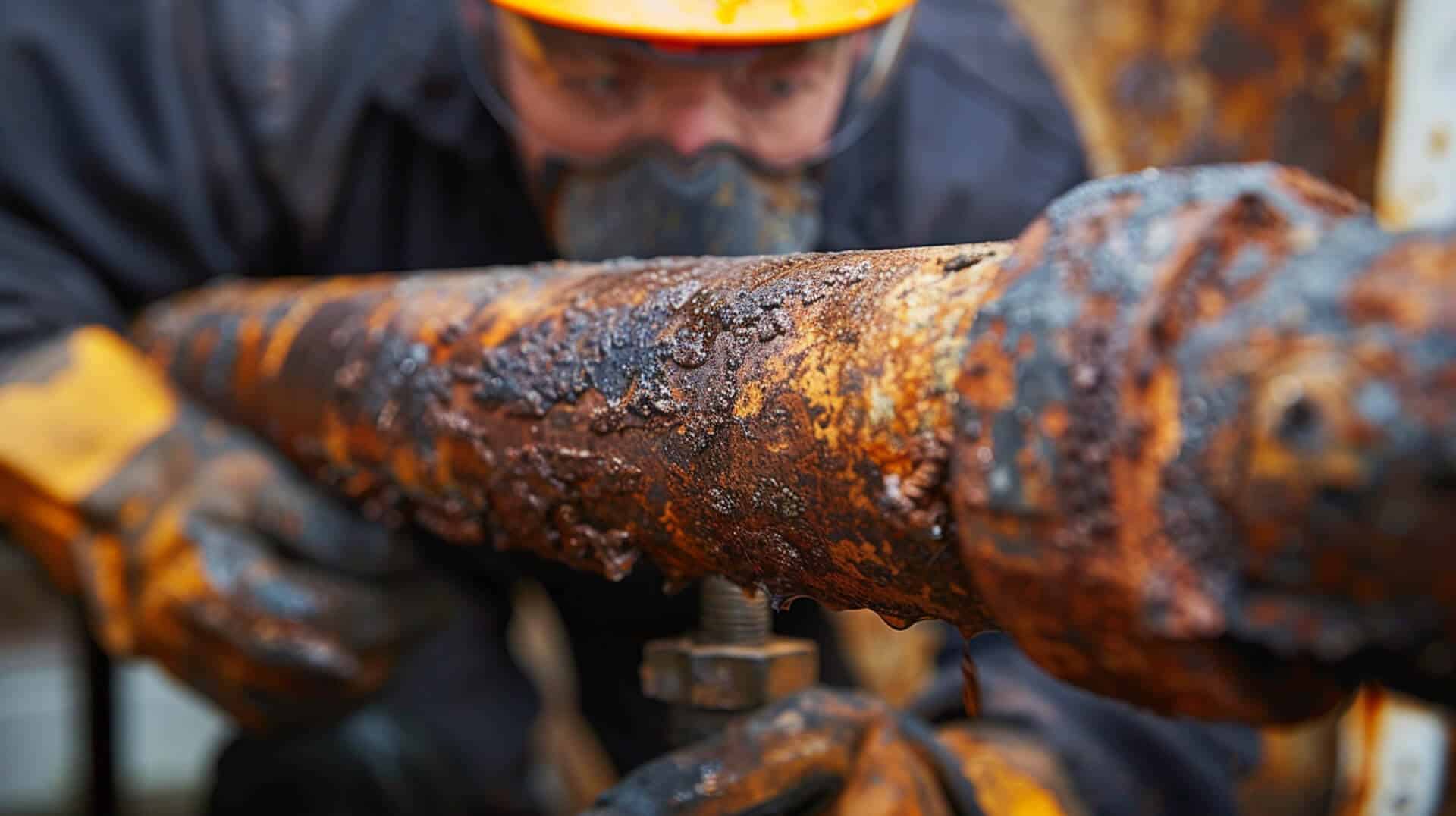
Corrosion surveys are essential for detecting various issues that can compromise the integrity of drainage systems. These surveys are designed to identify and assess the severity of common problems such as blockages, leaks, cracks, and corrosion.
Detection of Blockages and Leaks
During a corrosion survey, professionals utilise advanced equipment to detect blockages caused by the accumulation of fats, oils, food waste, hair, and other debris. Leaks are identified through visual inspection and the use of specialised cameras that can pinpoint areas where water is escaping from the pipe.
Assessment of Cracks and Corrosion
Cracks in the drainage system are often revealed by high-definition cameras capable of capturing detailed images of the pipe’s interior. Corrosion, both internal and external, is assessed based on visual cues, changes in pipe material, and anomalies detected by sonar units or other non-destructive testing methods.
Addressing Root Ingress
Root ingress is a common issue where tree roots penetrate the pipes, causing blockages and damage. Signs of root ingress include reduced water flow and visible roots during camera inspections. Once identified, professionals can address the problem by removing the roots and repairing any damage they have caused.
Distinguishing Between Internal and External Corrosion
Professionals distinguish between internal and external corrosion by examining the location and pattern of the corrosion. Internal corrosion typically presents as pitting or uniform corrosion on the pipe’s interior, while external corrosion may be influenced by soil properties and is often identified by examining the exterior surface of the pipe.
Influence of Soil Properties on Pipe Corrosion
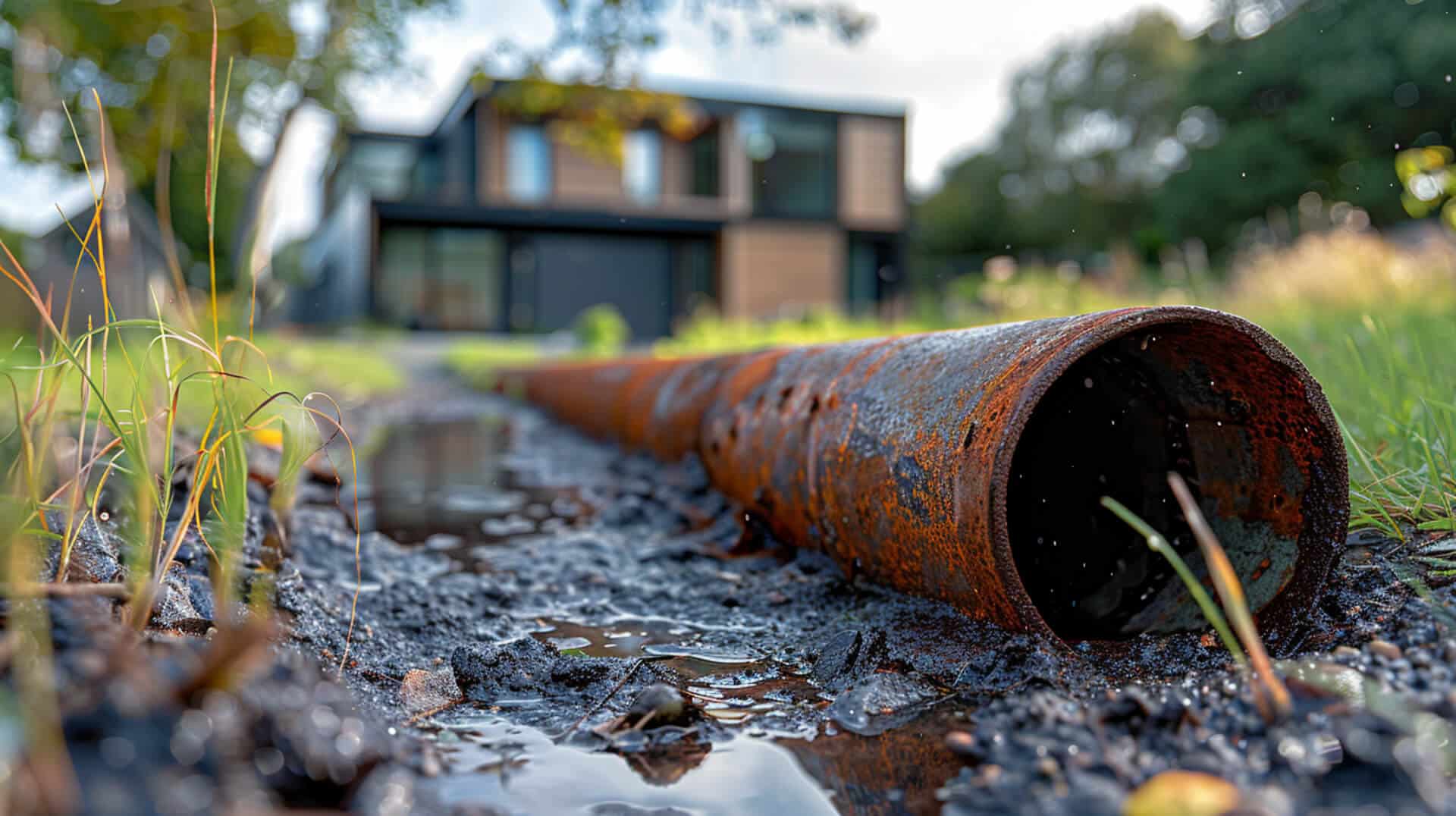
Soil properties play a significant role in the rate and type of corrosion that affects underground drainage pipes. Professionals conducting corrosion surveys pay close attention to these properties to determine the corrosive potential of the soil and to develop appropriate mitigation strategies.
Key Soil Characteristics in Corrosion Surveys
Surveyors assess several soil characteristics that influence corrosion, including:
- Electrical Resistivity: Low resistivity indicates a higher likelihood of corrosion due to increased electrical conductivity, which can accelerate metal loss in pipes.
- Moisture Content: Moist soil can be more corrosive as it facilitates the transfer of ions that contribute to the electrochemical reactions leading to corrosion.
- Temperature: Fluctuations in soil temperature can affect the rate of corrosion, with higher temperatures generally increasing the rate of chemical reactions.
Soil Contact Management as a Preventive Strategy
Managing soil contact is a crucial aspect of corrosion prevention. By understanding the specific soil conditions surrounding the pipes, professionals can implement strategies such as:
- Coating Selection: Choosing coatings with properties that resist the permeability and electrical conductivity of the surrounding soil.
- Cathodic Protection: Installing systems that protect the pipe material from the electrochemical reactions that cause corrosion.
- Physical Barriers: Using materials or methods to limit the pipe’s direct exposure to corrosive soil elements.
By considering these soil properties and implementing effective soil contact management, the longevity of drainage systems can be significantly improved.
Corrosion Prevention and Maintenance Strategies
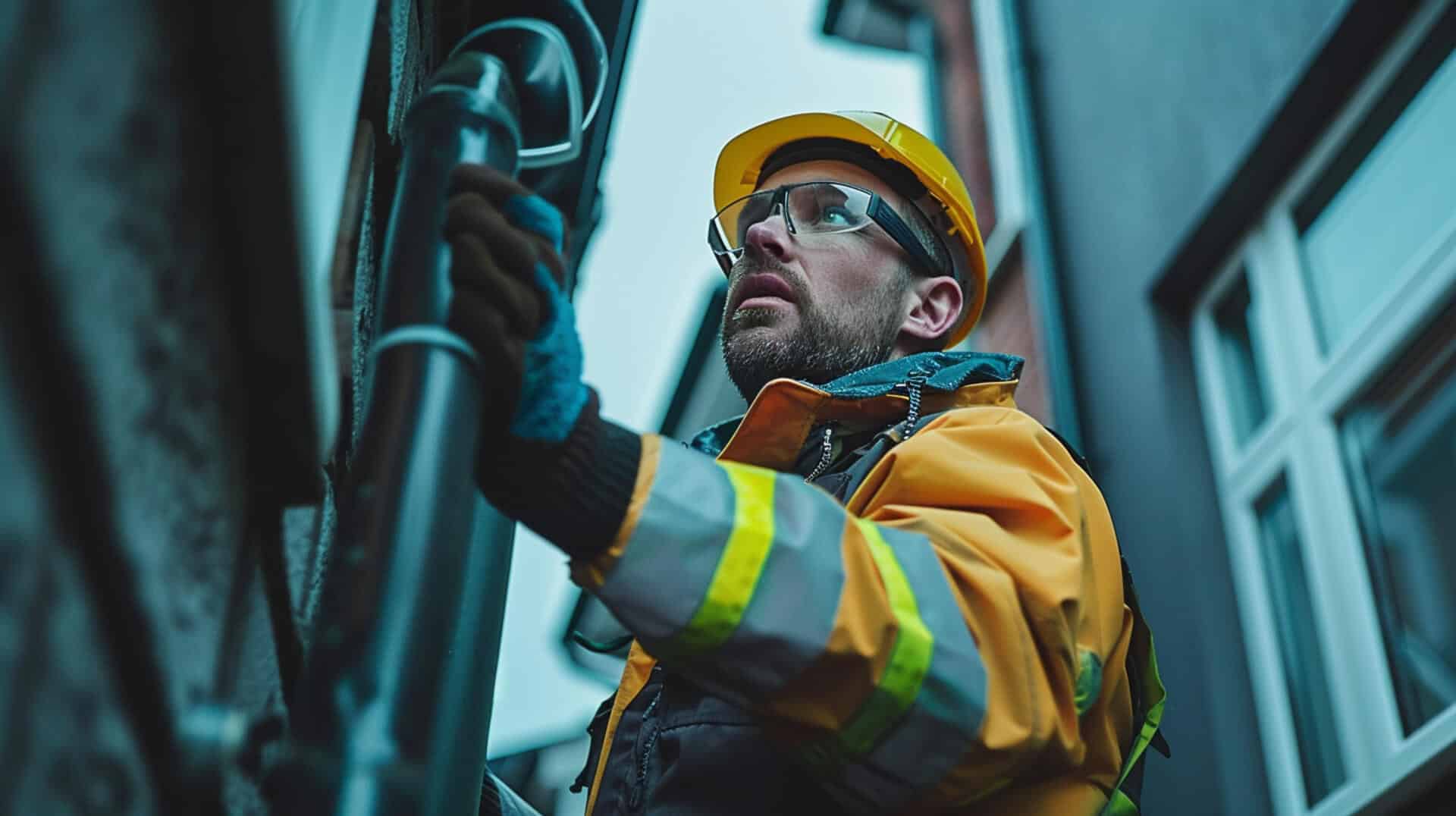
After a thorough corrosion survey, professionals will recommend a series of preventive measures tailored to your drainage system’s specific needs. These strategies are designed to extend the life of your pipes and prevent future corrosion.
Implementing Preventive Measures
Based on the findings of a corrosion survey, you may be advised to:
- Regularly Clean and Inspect: Keep the drainage system clear of debris and conduct periodic inspections to catch any signs of corrosion early.
- Adjust pH Levels: Modify the pH of wastewater if it contributes to corrosion.
- Control Temperature: Manage the temperature of the fluids in the system, as extreme temperatures can accelerate corrosion.
Coatings and Cathodic Protection
To prevent corrosion, two effective methods are commonly used:
- Coatings: Apply coatings such as polyethylene, epoxy, or polyurethane to create a barrier against corrosive elements.
- Cathodic Protection: Instal sacrificial anode or impressed current systems to mitigate the electrochemical reactions that cause corrosion.
Managing Corrosion Under Insulation (CUI)
For CUI, best practices include:
- Regular Monitoring: Implement a monitoring programme to detect CUI early.
- Use of Protective Coatings: Apply appropriate coatings beneath insulation to prevent moisture ingress.
- Insulation Material Selection: Choose insulation materials that minimise water retention and allow for proper drainage.
Revisiting Maintenance Measures
Maintenance and preventive measures should be reviewed and updated regularly, typically on an annual basis or following any significant changes to the system or its operating environment. This ensures that the strategies remain effective and that the system continues to operate at optimal levels.
Compliance and Environmental Considerations in Corrosion Surveys
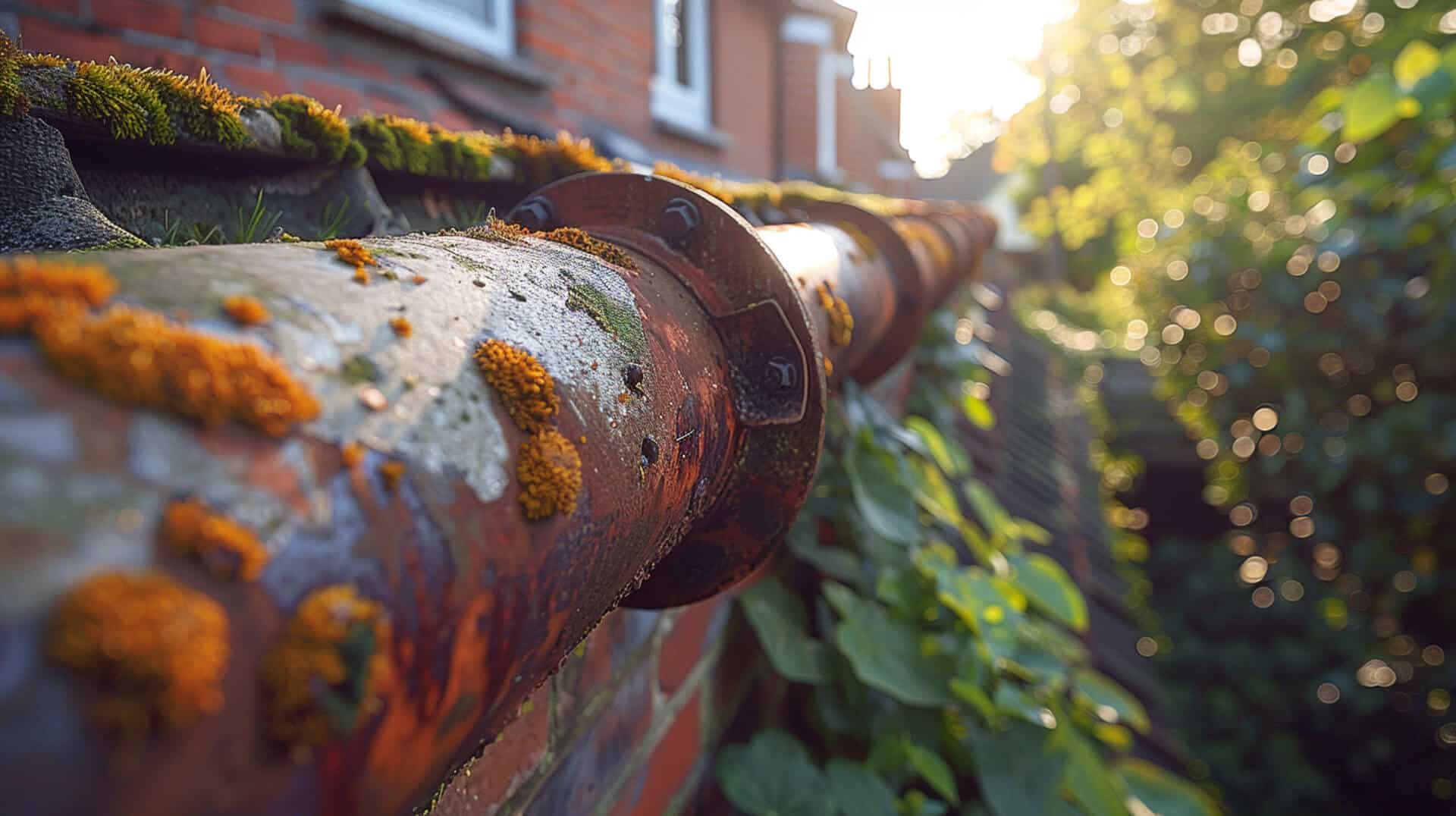
Conducting corrosion surveys is not only a matter of maintaining infrastructure but also of adhering to regulatory standards and protecting the environment.
Adherence to Regulations and Standards
During corrosion surveys, professionals must comply with a variety of standards, such as:
- BS 8005: Guide for new sewer construction.
- BS 8000: Workmanship on building sites.
- BS EN 1610: Construction and testing of drains and sewers.
These standards ensure that the surveys are conducted with precision and that the drainage systems meet the required quality and safety benchmarks.
Environmental Protection Standards
Corrosion surveys contribute to environmental protection by:
- Preventing Pollutant Release: Identifying and addressing corrosion early prevents the leakage of harmful substances into the soil and waterways.
- Mitigating Soil and Water Contamination: Regular maintenance based on survey findings helps maintain the integrity of the drainage system, reducing the risk of environmental damage.
Importance of Insurance Compliance
Insurance policies often require regular maintenance of infrastructure, including corrosion surveys, to minimise the risk of damage claims. Compliance with these requirements is crucial for:
- Validating Insurance Claims: Ensuring that any damage to the drainage system is covered under the property’s insurance policy.
- Reducing Liability: Protecting property owners from potential legal issues arising from neglected maintenance.
Role in Environmental Preservation
Corrosion surveys play a vital role in safeguarding the environment by:
- Identifying Risks: Early detection of potential issues allows for timely intervention, reducing the likelihood of environmental incidents.
- Guiding Maintenance: Informing property owners of the necessary steps to prevent the deterioration of their drainage systems, thereby maintaining ecological balance.
Planning and Design Implications of Corrosion Surveys

Corrosion surveys provide critical data that can significantly influence the planning and design of both new and existing drainage systems.
Informing New Construction Projects
When planning new construction projects, the results of corrosion surveys are invaluable. They offer insights into:
- Material Selection: Survey findings guide the choice of materials that are resistant to the specific types of corrosion identified in the area.
- Design Efficiency: Data on existing corrosion issues inform the design of drainage systems that are less susceptible to similar problems.
Considerations for Efficient Drainage Design
Efficient drainage system design takes into account:
- Hydrological Data: Understanding the flow rates and water composition helps in designing systems that can handle the expected load without accelerating corrosion.
- Environmental Conditions: Local soil properties and environmental conditions are considered to ensure the system’s resilience to corrosion.
Influence on Material and Construction Techniques
Corrosion surveys impact material and construction choices by:
- Highlighting Vulnerable Components: Identifying components that are more prone to corrosion can lead to the selection of alternative materials or additional protective measures.
- Guiding Construction Techniques: Survey results may suggest specific construction techniques that mitigate corrosion risks, such as trenchless technology for pipe installation.
Role in Retrofitting and Upgrading
For existing systems, corrosion surveys are crucial for:
- Identifying Retrofitting Needs: Surveys can pinpoint areas that require upgrades to enhance system longevity.
- Planning Upgrades: The data from surveys guide the planning of upgrades, ensuring that they address the most critical issues effectively.
The Survey Process: From Inspection to Solution Design
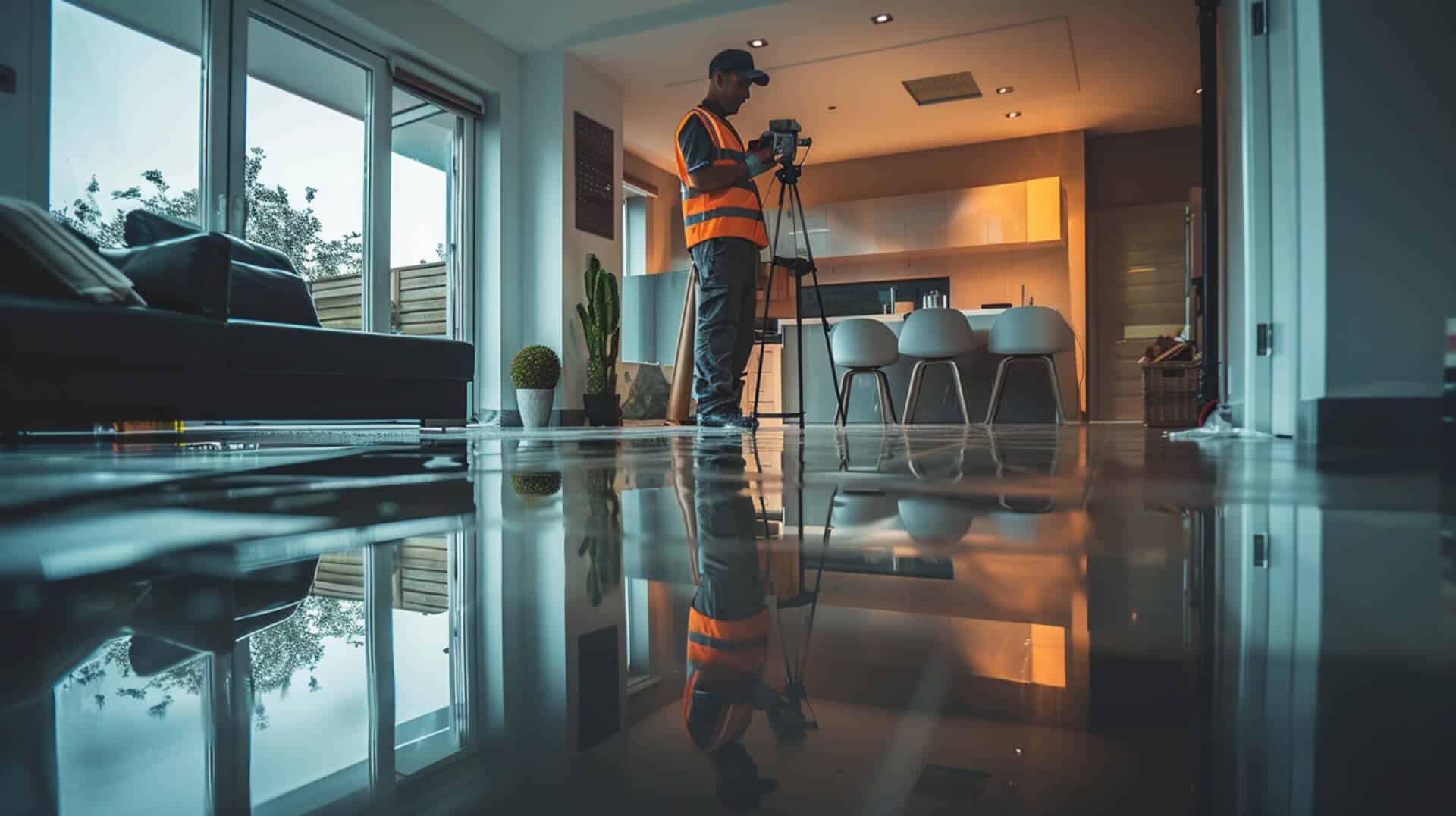
Conducting a corrosion survey is a systematic process that involves several key steps, from initial inspection to the final design of solutions. This process is tailored to address the unique conditions of each property’s drainage system.
Steps Involved in the Corrosion Survey Process
The corrosion survey typically follows these steps:
- Initial Inspection: Engineers begin with a visual assessment using specialised camera technology to identify any visible signs of corrosion or damage.
- In-Depth Analysis: Using advanced tools like CCTV, sonar units, and crawlers, the team conducts a thorough examination of the pipes.
- Data Collection: All findings, including the types and extents of corrosion, are meticulously documented for further analysis.
Utilising Camera Technology for Issue Identification
Engineers employ high-definition cameras and other diagnostic tools to:
- Capture Detailed Images: These images reveal the condition of the pipe interiors, highlighting areas affected by corrosion.
- Identify Specific Problems: The technology allows for the precise identification of issues such as cracks, blockages, and root ingress.
Methodologies for Designing Solutions
Upon analysing the survey data, engineers use various methodologies to design solutions that may include:
- Repair or Replacement Recommendations: Based on the severity of the corrosion, engineers may suggest specific repairs or the replacement of affected sections.
- Preventive Strategies: To prevent future issues, recommendations for changes in maintenance routines or system upgrades are provided.
Tailoring the Survey to Property Needs
The survey process is customised to meet the specific needs of the property by:
- Considering System Complexity: The approach is adjusted based on the complexity and size of the drainage system.
- Addressing Property-Specific Concerns: Solutions are designed with consideration for the property’s operational requirements and environmental conditions.
Selecting Experts for Corrosion Surveys
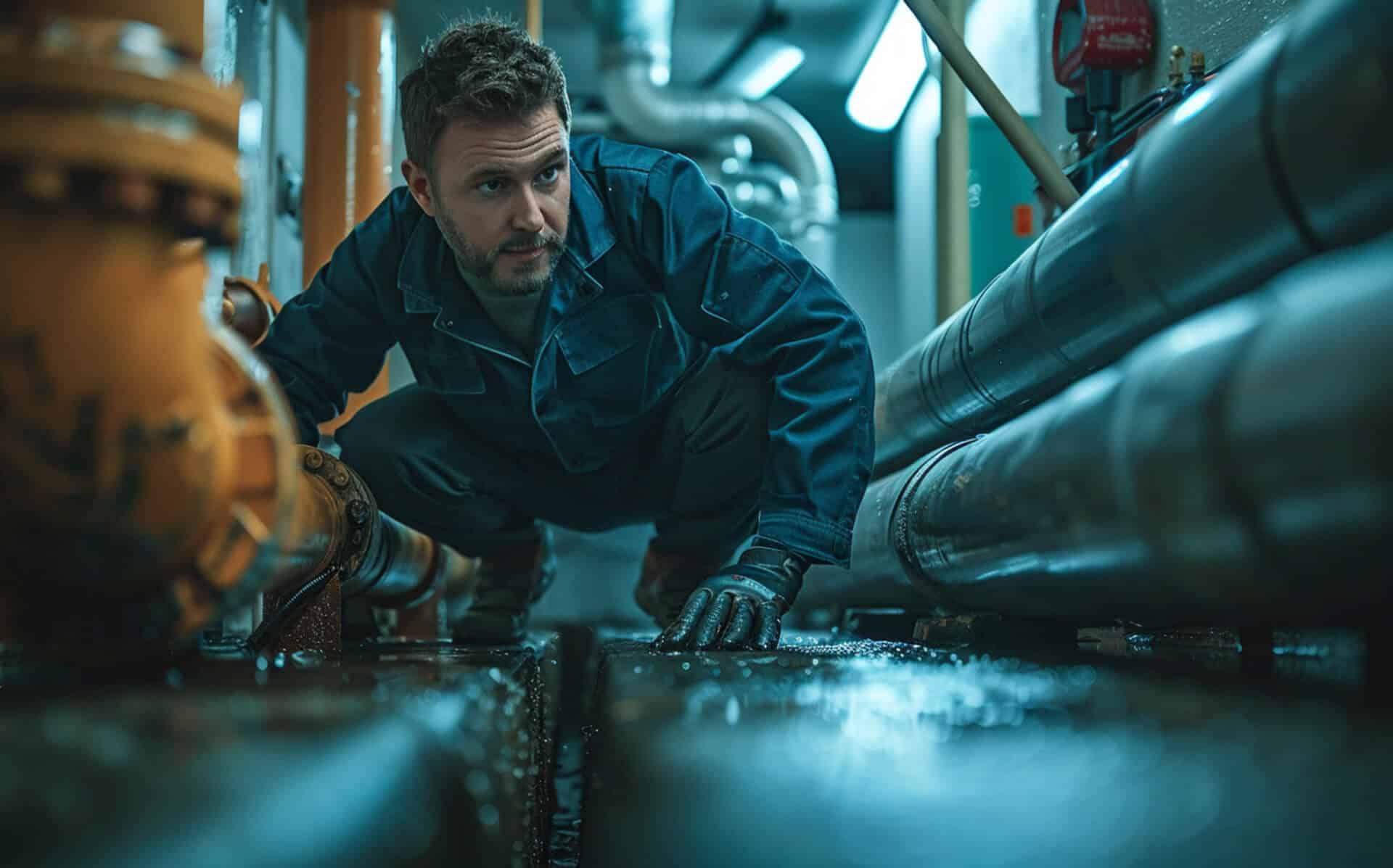
When you’re tasked with finding a professional to conduct a drain pipe corrosion survey, it’s essential to consider their qualifications and the quality of their equipment. This ensures that the survey will be thorough and the findings reliable.
Qualifications and Expertise
Professionals conducting corrosion surveys should have:
- Certifications: Look for certifications from recognised industry bodies, which indicate a level of expertise and adherence to standards.
- Experience: Consider professionals with a proven track record of conducting similar surveys, as experience can greatly influence the accuracy of the survey.
Equipment Quality and Service Scope
The quality of the equipment used in corrosion surveys is crucial. Ensure that the professionals you choose have access to:
- Advanced Technology: High-definition cameras, sonar units, and other state-of-the-art equipment.
- Comprehensive Service: A service scope that covers all necessary aspects of the survey, from initial inspection to detailed reporting.
Obtaining and Evaluating Quotes
When obtaining quotes, it’s advisable to:
- Request Detailed Proposals: Proposals should outline the scope of the survey, the equipment used, and the costs involved.
- Compare Services: Evaluate the proposals based on the comprehensiveness of the service and the value for money.
Importance of Relevant Experience
Assessing the professional’s experience with similar projects is important because:
- Familiarity with Similar Conditions: Experience with similar environments or drainage systems can lead to more accurate assessments.
- Problem-Solving Skills: A history of resolving complex corrosion issues indicates a professional’s capability to handle unexpected challenges.
Financial Aspects of Corrosion Surveys
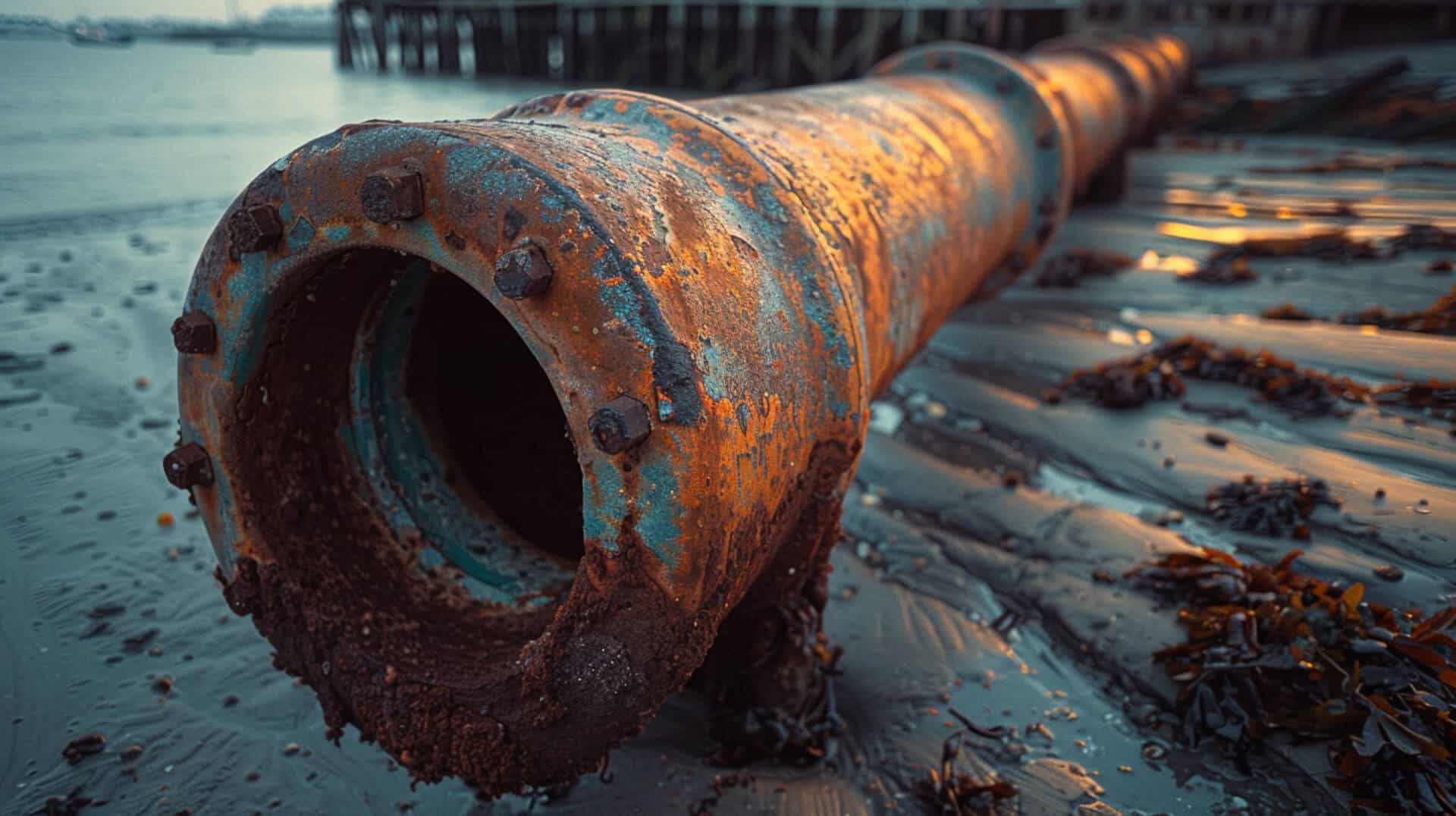
Understanding the cost implications of corrosion surveys is crucial for property owners, as these inspections are vital for the long-term preservation of drainage systems.
Determining the Costs of Corrosion Surveys
The expense of a corrosion survey is influenced by several factors:
- Scope of Inspection: The extent of the survey and the level of detail required can affect the price.
- Equipment Used: Advanced technology such as CCTV and sonar units may increase the cost due to their sophistication.
- Property Size and System Complexity: Larger properties with more complex drainage systems will require more time and resources to survey, which can raise the cost.
Why Invest in Corrosion Surveys?
Investing in corrosion surveys is essential because:
- Preventive Savings: They can prevent costly repairs by identifying issues before they escalate.
- Longevity of Infrastructure: Regular surveys contribute to the extended lifespan of drainage systems.
- Compliance: Surveys ensure that systems adhere to environmental and safety regulations, avoiding potential fines.
Impact of Drainage System Complexity
The complexity of a drainage system directly impacts the cost of a corrosion survey. Systems with multiple pipes, varying materials, or those that are difficult to access may require more specialised equipment and expertise, leading to higher survey costs.
Utilising Corrosion Survey Results
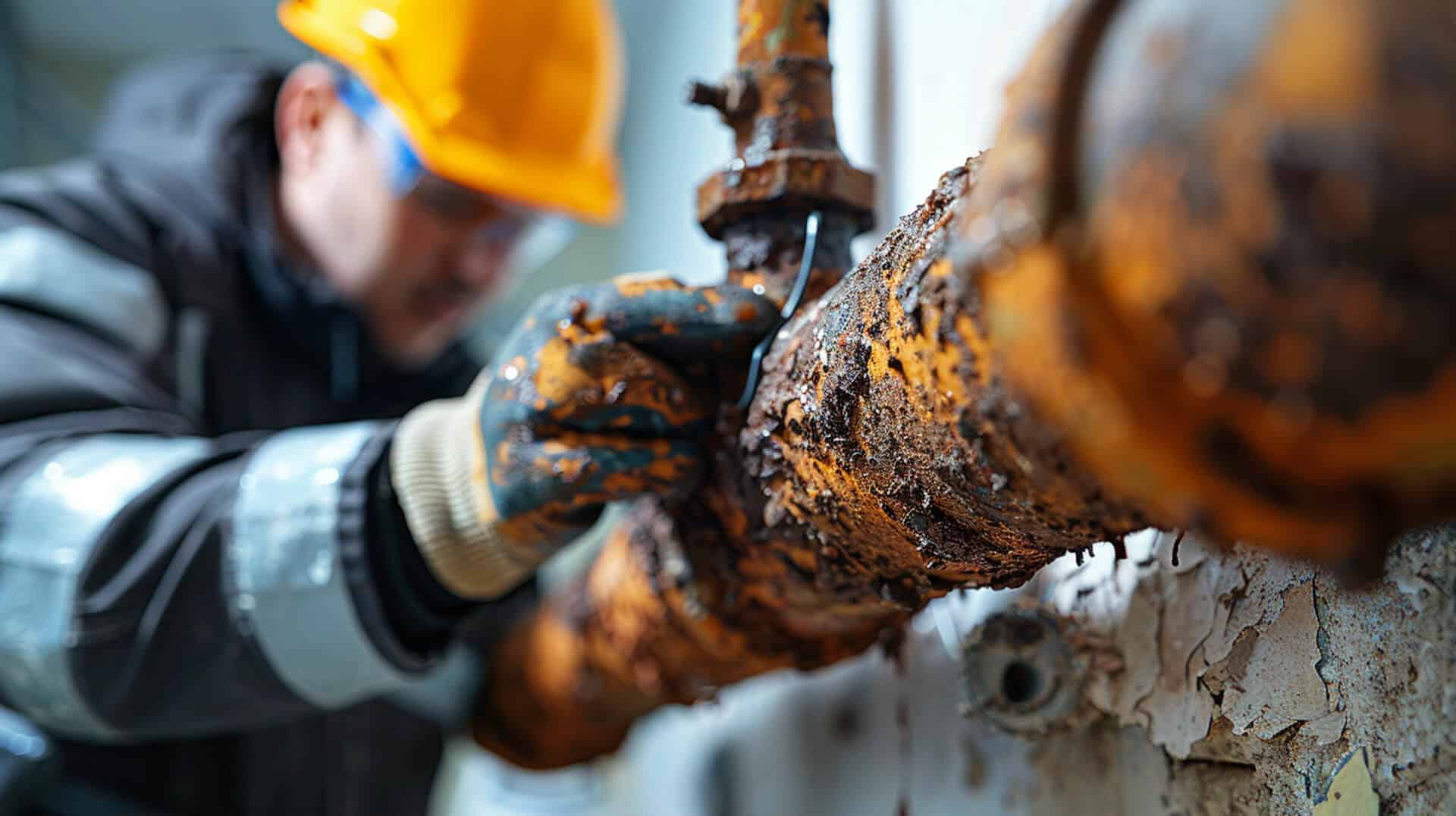
Property owners, business owners, and facility managers can maximise the benefits of corrosion surveys by implementing the recommendations provided in the survey reports. These recommendations are crucial for maintaining the integrity and efficiency of drainage systems.
Actions Post-Survey
Following a corrosion survey, it is recommended that you:
- Review the Report: Carefully examine the survey report to understand the current condition of your drainage system and any potential issues.
- Plan for Repairs: Schedule any necessary repairs or maintenance work to address identified issues promptly.
- Implement Preventive Measures: Adopt suggested preventive measures to mitigate future corrosion risks.
Long-Term Benefits of Regular Surveys
Regular corrosion surveys offer several long-term benefits:
- System Longevity: They contribute to the extended lifespan of your drainage systems by identifying and addressing issues early.
- Cost Savings: By preventing major repairs through early detection, surveys can result in significant cost savings over time.
- Efficiency: Regular maintenance based on survey findings ensures that your drainage system operates efficiently, preventing issues such as blockages and leaks.
Ensuring Continued System Health
To ensure the continued health of your drainage system:
- Schedule Regular Surveys: Establish a routine schedule for corrosion surveys to maintain oversight of your system’s condition.
- Stay Informed: Keep abreast of new technologies and methods in corrosion prevention and incorporate them where applicable.
- Consult Professionals: Engage with qualified professionals for ongoing advice and to perform the surveys, ensuring that your system remains in optimal condition.
